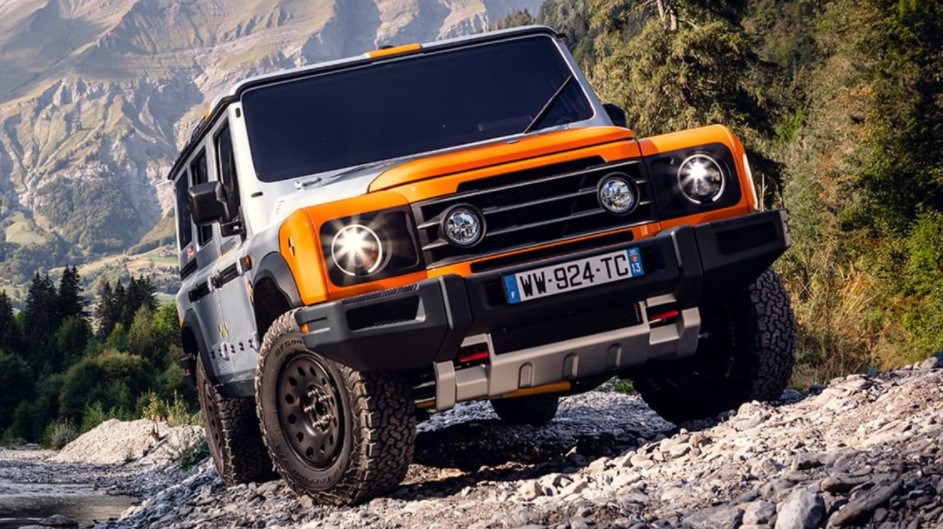
Four-wheel drive (4WD) wagons and vehicles with four-wheel drive (4WD) are popular among drivers who want to have more traction and control over their vehicle when they are traveling. 4×4 and 4WD vehicles, in contrast to most vehicles that only power two wheels, supply power to all four axles in order to reduce slippage.
The advantage of cheap 4×4 wheels and 4-wheeler vehicles is that they are better suited for driving in wet, icy, and snowy conditions when the road is slick, as opposed to other vehicles. Because of their greater traction, four-wheel-drive trucks and all-terrain vehicles are especially handy for off-road driving on dirt paths or through streams, as well as for climbing steep slopes and other difficult terrain.
When negotiating curves, these cars make use of differentials, which distribute torque to each wheel as the vehicle turns. This helps to prevent slippage and loss of control.
The distinction between 4×4 and 4WD is as follows:
A four-by-four vehicle has four wheels and is propelled by the power of all four of its axles. As a result, all four-wheel-drive cars are also four-wheel-drive vehicles. However, not all four-wheel-drive vehicles are four-wheel-drive. For example, a three-axle truck can be a four-wheel-drive truck with power in only four of the six wheels, resulting in a lower center of gravity (6×4).
A four-wheel-drive (4WD) vehicle is not the same as an all-wheel-drive (AWD) vehicle. Using a differential, an AWD vehicle sends power to the front and rear wheels in various proportions, depending on the situation. A 4WD vehicle distributes power evenly between the front and rear wheels at all times.
Many military, utility, and race vehicles are designed in this manner because of the increased traction and control provided by 4×4 and 4-wheeler vehicles.
Wagons with four-wheel drive
A 4×4 wagon is a great family vehicle that may also be used as a light delivery van on occasion. The wagon, on the other hand, is not a vehicle, and thus is not suitable for all forms of off-road driving. A four-wheel-drive car, on the other hand, can be maneuvered more easily than a two-wheel-drive vehicle in various conditions.
For example, a 4×4 wagon should be able to manage rainy, slick roads more successfully than a regular vehicle. If you intend to travel on dirt roads, you should consider purchasing an all-wheel-drive vehicle, which will provide greater performance when negotiating curves.
The 4×4 wagon is offered in a variety of forms, ranging from the most basic and rugged to the most luxurious. Many manufacturers are making wagons that get great gas mileage these days, not only to save money, but also to appeal to people who care about the environment.
Four-wheel-drive wagons are built to be tough, so they can haul far bigger loads than a two-wheel-drive vehicle would be capable of handling.
Vehicles with four-wheel drive.
Wagons are other four-wheeled vehicle types that are available in addition to SUVs and trucks. A 4WD truck’s construction makes it capable of navigating difficult terrain, crossing streams, and even maneuvering around ditches with ease. In addition, the vehicles have a large load capacity, which is ideal for hauling things like machinery and construction supplies.
Trucks are built to endure the punishment of traveling across rocky terrain because of their tough construction. In most cases, the suspension and brake systems are of the highest quality, and the engines have an impressive amount of horsepower and torque for lifting huge loads.
The 4WD SUV is available in both utility and luxury variants, and while it shares some qualities with a truck, it provides more space for the driver and passengers’ comfort. Although a luxury SUV may have many desirable amenities, the engine, in the majority of cases, is still powerful enough to tow several tons.
The following are the primary types of four-wheel-drive vehicles:
- All four wheels receive constant power from the engine while the vehicle is in full-time 4WD.
- Part-time 4WD-Using a switch or lever, the driver can alternate between 4×4 and 4×2 driving.
- When the vehicle is in automatic 4WD mode, it functions in either front or rear 2WD mode, unless the conditions are suitable for 4-wheeler vehicles. Driving conditions are automatically detected by the car, and 4WD is activated right away to keep the car from sliding.